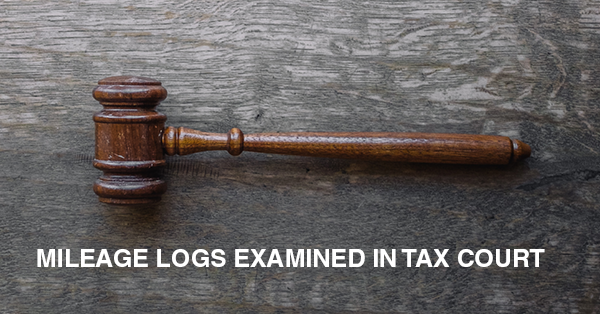MILEAGE LOGS EXAMINED IN TAX COURT:

In EZE, TC Memo 2022-83, (8/4/22), the taxpayer reported income and expenses from two business activities for 2015 and 2016. The first involved consulting in the electronic healthcare (EHC) field while the second involved residential construction.
The Commissioner’s determinations in a notice of deficiency are generally presumed correct, and the taxpayer bears the burden of proving them erroneous. See Rule 142(a). Section 7491(a) provides that the burden of proof may shift to respondent if the taxpayer “introduces credible evidence with respect to [a relevant] factual issue” and satisfies three additional conditions. Those conditions are that the taxpayer must have “complied with the requirements under this title to substantiate any item,” must have “maintained all records required under this title,” and must have “cooperated with reasonable requests by the [IRS] for witnesses, information, documents, meetings, and interviews.” § 7491(a)(2)(A) and (B).
The taxpayer owned three vehicles: a 2008 Mercedes Benz, a 2002 Ford SUV and a 2004 Chrysler. He testified that he used the Mercedes exclusively for his EHC business; that he used the Ford exclusively in connection with his construction business; and that he used the Chrysler exclusively for personal purposes.
To support deductions for vehicle expenses, the taxpayer submitted annotated calendars for the first seven months of 2015 and all of 2016. The annotations show the locations he supposedly visited in connection with either business. For several reasons, the Tax Court did not find this evidence credible.
- None of the calendar entries were made contemporaneously with the alleged travel. These were not all-purpose calendars recording various appointments in the taxpayer’s daily life. Rather, he created them solely for use in the IRS examination.
- The taxpayer supplied no evidence linking the locations shown on the calendars to the addresses of his EHC clients. He did not identify a single client who resided or worked at any particular address. Thus, he supplied no evidence that, if he actually made trips to these locations, the journeys were business trips.
- The calendar entries on their face seem questionable. For example, comparing entries for January 2015 and January 2016, the taxpayer asserts he visited the same address in Manhattan on January 1 of each year; that he visited the same address in Brooklyn on January 4 of each year; and that he visited the same address near LaGuardia Airport on January 13 of each year.
Furthermore, the taxpayer also submitted alleged odometer readings for his Mercedes. These were not contemporaneous. Instead, he prepared them during the IRS examination, keying the dates and mileage to the dates and destinations shown on the calendars. When asked how he kept track of start and finish odometer readings for hundreds of trips, he said that he jotted them down on scraps of paper (since discarded).
Finally, the descriptions of the business purpose were all the same, a vague reference to “business meetings.”
Bottom line: The Tax Court denied the deductions.




